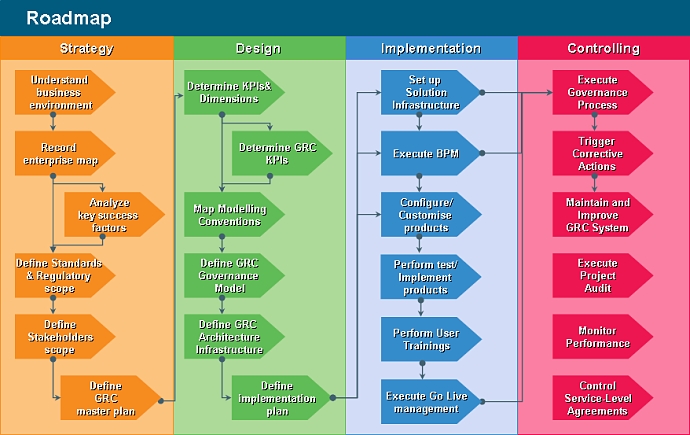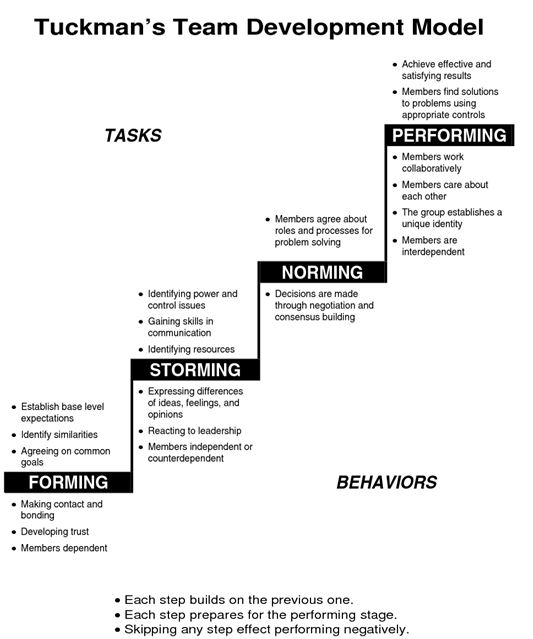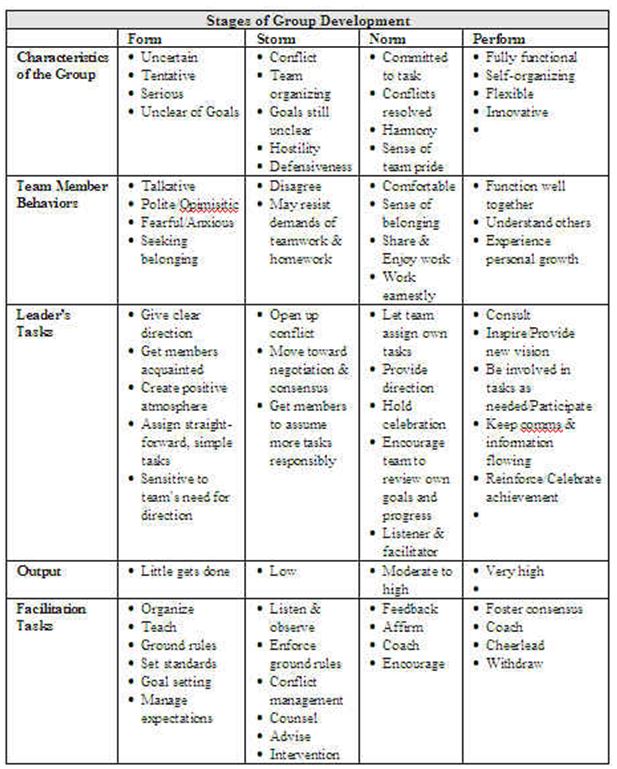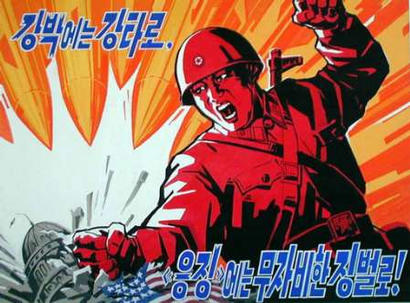Human Resources Management Contemporary HRM Essay
This is a human resource assessment based on Contemporary HRM and The Olympic Delivery Authority which is in charge of putting in place the necessary infrastructure for the London Olympic 2012. The assessment is based on four learning outcomes namely: investigate the traditional view of personnel management and the new approach of human resource management; evaluate the procedures and practices used for recruiting and selecting suitable employees; establish the effectiveness of principles and procedures for monitoring and rewarding the employee, and; explore rights and procedures on exit from an organization. A clear difference is put between the traditional personnel management and the contemporary human resource management. This assessment entails assuming the role of ODA Human Resource Director and responding to tasks common to this undertaking. It is clear that line managers are very instrumental in attaining human resource objectives and overall organizational objectives. Some of the motivations such as salary increments, bonuses, recognition among others play a crucial role in employee performance. The method of financial and non-financial rewards is based on the Motivation- Hygiene Theory by Herzberg which is utilized in ODA. Factors which determine employee performance in ODA include educations, skills and experience and professional qualifications. The strategy for monitoring organizational performance is designed as well as ODA’ exit strategy is stated. Overall human resource management as exemplified in ODA is very instrumental to organizational success.
Personnel Management and Contemporary HRM
As the HR Director of ODA you are to explain to the public the differences between traditional view of personnel management and contemporary human resource management. Examine critically the evolution and changing context in which HRM have operated in the past and now.
Some authors argue that there is a disparity between the contemporary human resource management and the traditional personnel management (Golding, 2010, p. 64; Paauwe, 2009, p. 115). They argue that these two fields can be used interchangeably and have no disparities in meaning and implication. Among those who ascribe to the notion that there is a difference between the two fields, their assumptions and theories are rather philosophical. The subject of personnel management has to do with the more administrative issues such as payroll in line with employment law and dealing with the associated tasks. On the other hand, human resource management encompasses the management of the workforce as one of the core resources which is instrumental a firm’s achievement.
When the disparity between the fields is acknowledged, HRM is regarded as being much wider in scope compared to personnel management because it entails and enhances personnel management functions while striving to form and nurture employees for the success of the organization. The major aim of HRM is to empower employees to attain their maximum efficiency levels (Golding, 2010, p. 87).
It is also worthwhile noting that personnel management can encompass administrative functions which are both routine and traditional. It is best referred to as being reactive and creating an enabling ground for the handling of concerns and demands presented in the workplace. On the other hand, human resource management entails the continuous strategies to administer and nurture a firm’s personnel department. In essence, with HRM, all the organization managers are engaged in one way or another and the main aim is to have the persons in charge of different departments nurture the necessary skills to deal the personnel related duties.
When it comes to motivations, personnel management is aimed at encouraging employees through rewards, salaries and bonuses. From the traditional point of view of personnel management, the contentment of employees is the ideal motive to enhance work performance (Golding, 20, p. 99).
There has been an evolution and changing context of Contemporary HRM from the past and now. Contemporary HRM models seem to indicate that the role of human resources have been shifting as firms strive to their human resource function to be more tactical and leaner. Authors such as Truss et al (2002, p. 41); Katz and Kahn, (1978, p. 163); and Struss et al, (1963, p. 25), argue that humans resources are playing a “strategic” tactical role based on the idea that the employees with the human resource departments are in a position to put into effect some judgment over the tasks and can deliberately alter or influence that role. Katz and Kahn (1978, p. 171) role-set theory, the duties performed by employees are socially developed through the attitudes and thinking of the role-set members. These have in essence shaped organizations behaviour and the general functions of human resource departments.
As a human resource expert, explain to the current staff of ODA your roles and activities as the HR director.
As an HR director in ODA, my roles and activities will encompass the following
Employee Recruitment
This is one of my most fundamental roles in ODA. This is because, this duty ensures that the organization chooses the most capable and skillful persons from a pool of applicants. This role entails the assessment of the capability and competency of applicants with regard to the needs of ODA. By effectively performing this function, ODA will realize increased value and attain its organizational aims and objectives (Golding, 2010, p. 33).
Enhancement of Employee Compensation Packages
Motivating employees is one of my core functions in ODA. This can be attained through rewards, bonuses particularly to the employees who are excelling in their line of duty. The department will be assessing the employees from time to time and those who are seen as having exceeded their expectations are rewarded accordingly. As an HR director, I motivate employees through awards, holiday offers, salary increases, equities just to mention a few.
ODA Organization Planning
I am delegated with the duty of ensuring that, to together with the Human Resource Department, I plan for ODA future actions which will engage people. And one crucial aspect for this planning is the ODA employees. It’s fundamental that I ensure that the employees are sufficient to enhance ODA’s value. My role also entails planning for ODA future aims and objectives with regard to staff and making clear these goals to all employees and this important because it makes all persons to work towards a common goal in one direction (Golding, 2010, p. 28).
Evaluate the role and responsibilities that line managers played to manage people at work as strategic partners to HR Director.
Through the devolution of role and responsibilities to the line managers, they were accorded the chance to participate in daily employee management while I concentrated on the attainment and better alignment of ODA processes and systems with organizational goals. Dave Ulrich (1997; 2005) came up with new functions for the line managers when he described them as “business partners” and “shared services”. Line managers were delegated with roles and held responsible for the distribution and budgeting of resources and other employee administration issues in essence playing a more essential function in human resource management. They are very handy in employee development since they are working side-by-side with the employees and therefore their responses are more appropriate and timely (Whittaker and Marchington, 2003, p. 251).
There is increasing need to delegate more duties to the management of line managers such as the development of training tasks, budgeting and the dissemination of mentoring functions. In ODA, I found out that the line managers are crucial drivers of strategic change when accorded the duty of effecting human resources strategies in their line of operation. Line manager were more than glad in being delegated with human resource responsibilities because according to them, it add difference and braves them to work. The engagements of line managers enhanced my transformation as the HR Director in terms of approach towards human resources, relations and change. Increased use of line managers brought about enhanced workplace conditions because they have a better understanding of the range and involvements required.
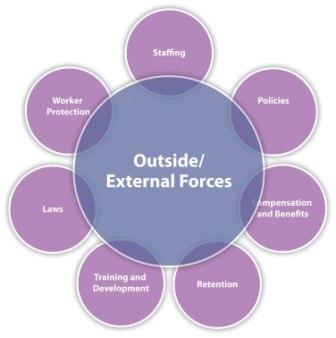
Recruitment and Selection of Suitable Employees
Explain in analytical terms to the members of staff, human resource planning process for ODA in connection with London 2012 Olympics, the information needed and the various steps involved in the planning process for the actualization of its tasks.
In a nutshell, the human resource planning process for ODA entails identifying the position the organization has to fill what is referred to as personnel planning. We have to develop a structured process, forecast the personnel needs, do ratio and trend analysis and forecast human resource demand.
Design of the HR Management System for ODA
The main and fundamental issue involved in the human resource planning as far as ODA is concerned is to ensure that there is an appropriate system in place to manage the London 2012 Olympics. The design of the human resource management systems is to assist handle the human resources and align them to ODA’ goals. This system will manage the human resource procedures, guidelines, and strategies, tracking the changing human resource inclinations such as implementing more supple practices, outsourcing and technology changes.
Review ODA’s financial, operational and strategic plans to establish their effect on HR planning
This will entail periodic reviews of ODA’s strategic plans and should be in line with its vision, values and culture. The HR managers are to determine the both the long-term and short term requirements within the context of the tactical plan and direction established by ODA. As it plans, the HR planning should put into consideration the total ODA budget assigned for HR spending.
Determine the types and number of vacancies needed in every functional area in the course of ODA’s plan
Analysis of entity jobs should consists of analyzing job, abilities, responsibilities, equipment needed, knowledge and duties. These will include among other things, collecting information on the dynamics in the operating settings which might result in the reduction in HR budgets and programs. On the other hand, supply analysis need to investigate, current recruitment, adjustments, and attrition.
Identify the precise needs for each vacancy in the vacancy description
The job descriptions need to be carried out after the job analyses have been done. The descriptions should detail the responsibilities and duties and also the skills and knowledge required to perform the specific functions.
ODA’s Environmental Analysis
It is the second step and will entail the comprehension of HR planning process within the perspective of HR management. There is need as the HR director, to understand both the external and internal ODA environments with the information on the external environment encompassing among other things such as industry, technology, economy, and the labour regulations in UK, availability of employees and distribution of labour. Some of the internal data which is necessary with regard to ODA will encompass the prevailing status of ODA’s human resources, long and short-term strategies and plans for ODA.
Projecting HR Demand
The objective here is to establish the type and number of employees required in ODA’s future. Of course forecasting will entail the present and past events and also encompass future ODA’s objectives. As the HR Director for ODA, I use bottom up forecasting to anticipate future HR needs by collecting the various human resource needs from ODA’s units.
Planning and Reconciliation
This entails the building up of action plans that are informed by the collected data, investigations and available options. The main point here is that the process should be acknowledged by ODA’s top management and staff. The plans should be the main concern of the HR department and the main players and detractors identified. These plans may encompass management and training development plan, appraisal plan and HR supply plan.
Discuss how the HR planning process of ODA would affect the structured process of the organisation compared to that of LOCOG.
An effective human resource planning process will have major ramifications for ODA and LOCOG in general. This is because; it will influence the whole organization through the preparation of employees to attain the overall objectives not only for ODA but also for LOCOG in general. Without proper HR planning process, ODA and LOCOG will be ill prepared to handle the Olympics in 2012 making it a critical component of the whole process.
Evaluate interview as a technique of selecting staff into the organisation and discuss the other possible alternative selection methods available for ODA.
An interview is an avenue which is aimed at collecting the information from the prospective employee through oral responses. It can also be utilized to make useful predictions about the future selection of employees in an organization based on the oral and written responses. It is most accepted employee selection approach being utilized in many organizations to this day making it a valuable tool for management. As the ODA HR Director, I will utilize the interview to assess the required personnel to deliver London Olympics come 2012. It involves the following processes.
Step 1
This entails writing down the job description details alongside the associated duties and responsibilities, required abilities, knowledge and other pertinent qualifications.
Step 2
This will encompass recognizing the vacancy main duties and to attain this it is important to grade every job based on its significance to the achievement of the organization and the duration required to perform these duties.
Step 3
The third step will involve the creation of interview questions with regard to the definite duties in a manner that the most crucial duties will attract more questions.
Step 4
It is necessary that good descriptive answers be developed besides a 5-point-scale with appropriate answers based on the ratings.
Step 5
At this stage, an interview panel is put in place and the interviews carried out. Structured situational interviews are preferred to sequential ones.
Besides carrying out the structured interviews, ODA has the choice of adopting the college recruiting approach or employing the services of On Demand Recruiting Services. With college recruitment, ODA HR department dispatches representatives to the universities to carry out applicant screening while with ODRS, ODA is able to benefit from the services of short terms applicant recruitment agencies to run its project.
Explain in clear terms to your staff how the selection that has been done so far and those you still intend to do could be considered as practices and procedures in the selection process ‘best practice’ in comparative terms to LOCOG. Using your understanding of the legal frameworks guiding recruitment and selection in the United Kingdom.
The selection and recruitment process so far espouses some of the best practices within the UK legal framework with special reference to LOCOG because; we applied anti-discrimination and equal opportunity legislation. Guided by this, we ensured that during the interview process we did not base employment on the personal characteristics of the prospective employees such as disability, country of origin, age, religion, sex, and marital status (Direct.gov.uk, 2010). Therefore, the reason for rejecting any would be employee was solely based on the ODA’s job description requirements. According to the UK law, after categorizing a selection of applicants, then ODA need to apply a selection approach to determine the final employees such as competence, skills, capability and experience. We adopted this subjective approach to the selection and recruitment and it was applied without favor to all the applicants, and this shall continue to the basis for selection and recruitment at ODA in future exercises
Principles and Procedures for Monitoring and Rewarding Employees
Explain ODA’s job evaluation process and then, lists and explain factors that determine employees’ pay.
Job evaluation is the systematic evaluation of jobs to establish the value of one job as measured against another. ODA’s job evaluation process has five steps as stated below:
Step 1
At this stage, a job description is done, and if the position is currently held by ODA’s employees, then she will also have to review it and append his/her sign as well.
Step 2
The HR manager reviews the job description and if he/she agrees, then the duties and requirements are approved and append his/her signature. Otherwise, it is returned to the line manager for changes.
Step 3
This is the review stage whereby the HR reviews the job description in consultation with the line manager before presentation to the Job Evaluation Committee as stated in the succeeding step. The HR is to make sure that there is balance and uniformity in the descriptions by the doing changes for format and clearness. And if any changes are done, then it returned to the line manager for signature.
Step 4
The Job Evaluation Committee is appointed by the ODA Human Resource Director and has representation of from all the ODA organization. This committee ensures that there is fairness in all jobs by utilizing the consistent and determined approach for evaluation and review.
Step 5
ODA Human Resource Director reviews and confirms the titles and job evaluations as per the counsel and suggestions of the committee. There is also an appeals system in place should any employee of ODA feel that due process was not followed or rather some information was not considered.
Factors which determine employee pay include:
Education, Skills and Experience
Employees earning will commensurate with their level of education, skills and experience
Piecework Plans
ODA’s pay is determined by a number of items based on each employee’s per unit time such as per day or working hours. By this approach, an employee per hour or per day rate is determined for every unit of production.
Merit Pay
This is based on the employee individual performance especially after evaluation has been conducted and is not the same as bonus.
Professional Qualifications
Employees who possess exceptional professional qualifications are able to apply their knowledge in attaining ODA’s objectives and therefore, these professions attract special incentive pays from ODA.
Classify the varieties of reward systems as discussed in class and critically explain their impact on employees’ performance at ODA.
Individual Employment Rewards
This encompasses the incentives for the professional employees, merit pay incentives and piecework plans.
- Piecework plan encourages ODA employees to work extra hours and enhance the attainment of organization’s objectives. That implies that the more an employee increases their man hours and production per unit time, the more their pay
- Professional employees’ incentives are aimed at encouraging the employees to undertake special courses which are related to their line of duty and this in essence attracts increased skilled manpower to ODA. By doing so, the employees are rewarded generously with an incentive pay.
Recognition Based Awards
These are a form of non-financial rewards and will often include things such as approval, “thank you” messages and praise for a job well done.
Group Incentive Plans
This plan encourages team work among the ODA employees because by working together, they are able to achieve and surpass the set target and are compensated for these efforts accordingly.
ODA Organization Plan
This is an organization wide approach by ODA and may encompass sharing the proceeds after attaining the organizational objectives.
Incentives for Executives and Managers
These include the short term incentives such as stocks ownership plans, annual bonus besides other long term incentives. With the adoption of relevant motivational theory, explain how the HRs can be affected as a result of linking the theory and reward system in the organisation.
The most appropriate motivation theory for ODA is Motivation- Hygiene Theory by Herzberg. The Motivation-Hygiene Theory was advanced by Fredrick Herzberg, an American Psychologist. This theory is also referred to as Two-factor theory. Maslow’s thoughts influenced Herzberg definition of the working environment through the study of working motivation. His aim of research was to determine the work conditions and situations which were experienced negatively and positively by the workers; the drivers of work satisfaction (Ryan & Deci, 2007, p. 58). His study revealed that the employees were influenced by twin factors: “the motivator” and “hygiene factors”.
When the motivator factor is fulfilled it leads to satisfaction and the hygiene factors lead to dissatisfaction if they are not met (Cooper, 1999, p. 390). According to Herzberg, financial rewards such as money are a hygiene factor that will create dissatisfaction when it is not received in the appropriate quantities, though it is not encapsulated as the only positive motivator and satisfier (Rotenstan, 2007, p. 412). According to him, salary gives a favorable but short term feeling but the motivators causes lasting satisfaction (Armstrong, 2003; Wiley, 2003, p. 48). And by ODA adopting various financial reward mechanisms such as incentive plans, it has really motivated. The motivators which bring about satisfaction are factors include recognition, success, and sense of contribution, being challenged, independence, trust, responsibility, independence, and career development from ODA. The hygiene factors are necessary to ensure that the employee does not become dissatisfied (Findlay, Dawson & Sparks, 2006, p. 65). Workers are not engaged in their duties to cause higher motivation but a lack of it may generate dissatisfaction. The typical hygiene factors include: salary, company policies, status, working conditions and administration (Armstrong, 2003, p. 73).
As the HR Director, discuss the diverse ways by which the event organisers of London Olympic 2012 will device strategy at monitoring performance.
Typically Olympic events are onetime events and therefore, they hire short term staff in areas such technology, accounting and performance of the Olympics. It becomes more difficult to monitor the performance of staff when it is big and ensure accountable in such a scenario. However, with the assistance of internal auditors, even organizers are able to deal with non-compliance and material errors. It is therefore necessary that the event organizer higher auditors with diverse expertise in various auditing facets and there is need to invest in quality control processes and performance planning.
Exit from the Organisation
Discuss in clear terms what the exit procedures at the London 2012 are and compare it with what entails in another organisation. Based on your findings, can these procedures be seen or adjudged as best practices?
ODA has outlined an exit strategy which has been remitted to DCMS stating how the parks and the venues will be relinquished to OPLC. OPLC is communicating with the ODA over the exit strategy after which could see the title given to LDA after the Olympics. With regard to this, ODA has already put final touches to the post-game exit strategy alongside the responsibilities and the budget for the same with OPLC (ODA, 2009).
Under this exit strategy, ODA is also supposed to provide maintenance for the landscape till the official handover in 2014. The tunnel assets are also to be relinquished to the power companies who are charged with the future upkeep and running of the assets. ODA is also required to remove the temporal footbridges and highway bridges, elimination of transitory perimeter wall field (ODA, 2009).
Lastly, you are to consider the selection criteria the organisation would adopt in declaring an employee redundant and explain it to your audience.
According to Direct.gov.uk (2010), ODA has put in place an employee redundancy policy whereby the employees prior to the exit, will be given a one month notice ahead of their expected end of employment. The statutory redundancy policy for ODA will encompass:
- Not less than a week’s notice for employees who are expected to serve from one month to two years
- A notice of one week for every single year for ODA employees working for two to twelve years.
Conclusion
This human resource assessment investigated four main learning outcomes of: investigates the traditional view of personnel management and the new approach of human resource management; evaluating the procedures and practices used for recruiting and selecting suitable employees; establishing the effectiveness of principles and procedures for monitoring and rewarding the employee, and; explored rights and procedures on exit from an organization. It began by explaining the difference between personnel management and human resource management. It was found that there is indeed difference between the two fields in that personnel management deals with the administrative functions while human resource management is concerned with the formation of ongoing strategies to administer organizational personnel. Some of the roles of HR Director include employee recruitment, enhancement of employee compensation packages, and organizational planning.
The roles played by line managers are indisputable. HR directors and managers delegate duties and responsibilities to the line managers who are regarded as “business partners”. Line managers are given duties and held responsible for the distribution and budgeting of resources and other administrative issues. The process of recruitment and selection of suitable employees entails the design of HR management system for ODA, review of ODA’s financial operational and strategic plans, determining the types and types of vacancies needed in every functional area and identification of precise needs for each vacancy.
The interview is most preferred mode of selecting ODA staff. But besides carrying out the structured interviews, ODA has the choice of using ODRS services and college recruitment approaches. The selection and recruitment of employees is line with UK employment and LOCOG law. Among the factors which determine employee include piecework education, skills and experience besides the professional experience they hold.
References
Armstrong, M. (2003) Managing Reward Systems and Contemporary HRM, New York: New York University
Direct.gov.uk, (2010) Employment terms and conditions and terms. Contemporary HRM Direct.
Findlay, A. Dawson, J. & Sparks, L. (2006). Employment in the American Superstores: Findings from the project and Contemporary HRM. Working Paper 8705, Institute of Retail Studies, Starling
Golding, N., (2010) “Strategic Human Resource Management Contemporary HRM” in Beardwell, J. and
Claydon, T. (2010) Human Resource Management A Contemporary HRM Approach, FT Prentice Hall
Katz, D. and Kahn, R. L. (1978), The Social Psychology of Organizations and Contemporary HRM, 2nd edition, New York: Wiley
McGrane, T.L (1995) Olympic auditing. Internal Auditor – Contemporary HRM
ODA ( 2009) Contemporary HRM Programme Delivery Baseline Report
Paauwe, J. (2009), ‘HRM and Performance: Achievement, Methodological Issues and Prospects’ Journal of Management Studies, 46 (1):
Rotenstan, H. (2007) Contemporary HRM – Prediction of the job satisfaction from the characteristics of personal work goals. Journal of Organizational Behaviour, I 9 (4), 409-430
Ryan & Deci (2007) Self Determination and Intrinsic motivation in Human behaviour – Contemporary HRM. New York: Plenum
Strauss, A., Schatzman, L., Ehrlich, D., Bucher, R. and Sabshin, M. (1963) ‘The hospital and its negotiated order’. In Friedson, E. (Ed.) The Hospital in Modern Society, New York: Macmillan
Truss, C., Gratton, L., Hope-Hailey, V., Stiles, P. and Zaleska, J. (2002), ‘Paying the piper: choice and constraint in changing HR functional roles Contemporary HRM, Human Resource Management Journal, 12 (2): 39-63.
Ulrich, D. (2005) The HR Value Proposition, Boston: Harvard Business School.
Whittaker, S. & Marchington, M. (2003) “Devolving HR Responsibility to the Line: Threat, Opportunity or Partnership?”, Employee Relations Contemporary HRM, Vol. 25, No. 3, p. 245-261.
Wiley, C. (2003) Non-financial rewards and employee motivation Contemporary HRM. University of Tennessee: Chattanooga
Do you have any interesting facts about Contemporary HRM and how it is deployed at your organisation? We are interested to know, feel free to comment below. Thank you.

